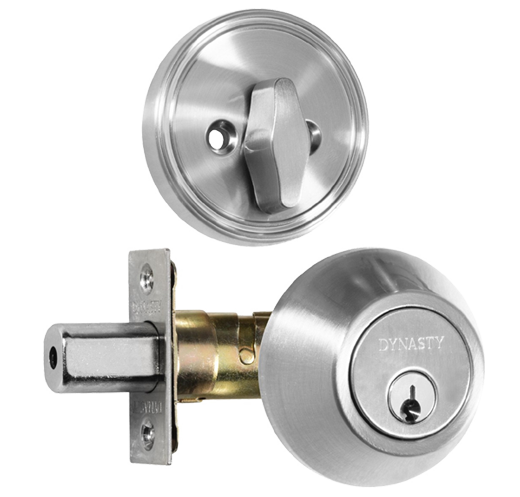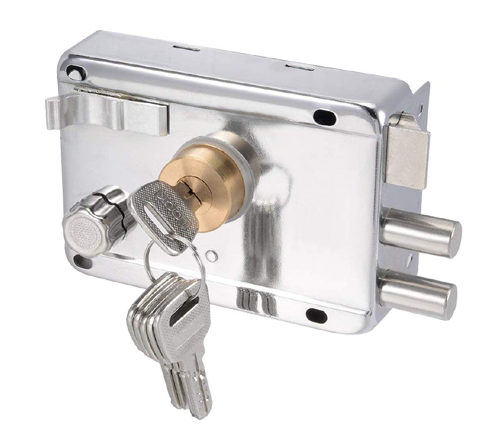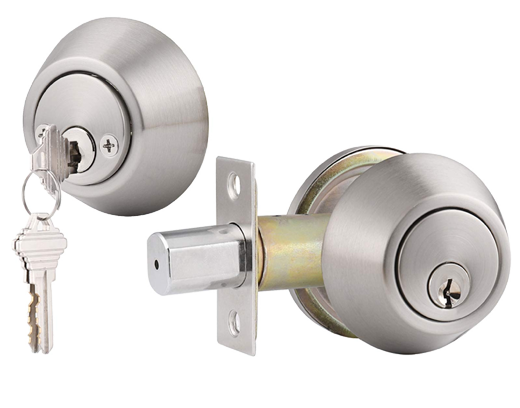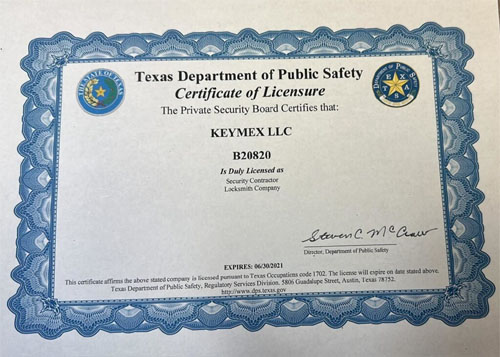Understanding the Different Types of Deadbolts: Enhancing Security for Your Home and Business


Deadbolts are a critical component of a robust security system, providing enhanced protection for both residential and commercial properties. Unlike standard locks, deadbolts offer an additional layer of security by requiring a key to operate both from the inside and outside. In this blog, we’ll explore the different types of deadbolts, their features, and their applications to help you choose the right one for your security needs.
1. Single Cylinder Deadbolts
Single cylinder deadbolts are one of the most common types of deadbolts. They feature a key-operated mechanism on the outside and a thumb turn or lever on the inside.
- Key Features: Easy to use and install, single cylinder deadbolts provide a good balance between security and convenience. The thumb turn on the inside allows for quick and easy exit without the need for a key, which is crucial in emergencies.
- Applications: Ideal for residential front doors and other entry points where ease of exit is important. They are best suited for doors without glass panels, as the thumb turn can be easily accessed if the glass is broken.


2. Double Cylinder Deadbolts
Vertical deadbolts, also known as Jimmy-proof deadbolts, are designed to resist forced entry techniques such as prying or “jimmying.”
- Key Features: The lock bolt interlocks with a strike plate, making it much harder for intruders to force the door open. Vertical deadbolts are surface-mounted, which means they are installed on the inside surface of the door, providing an additional layer of reinforcement.
- Applications: Commonly used on apartment doors and other entry points where forced entry is a significant concern. They are particularly effective for reinforcing older doors that may be more vulnerable to break-ins.
3. Vertical Deadbolts
Vertical deadbolts, also known as Jimmy-proof deadbolts, are designed to resist forced entry techniques such as prying or “jimmying.”
- Key Features: The lock bolt interlocks with a strike plate, making it much harder for intruders to force the door open. Vertical deadbolts are surface-mounted, which means they are installed on the inside surface of the door, providing an additional layer of reinforcement.
- Applications: Commonly used on apartment doors and other entry points where forced entry is a significant concern. They are particularly effective for reinforcing older doors that may be more vulnerable to break-ins.


4. Mortise Deadbolts
Mortise deadbolts are installed within a mortise (a pocket) cut into the edge of the door. They are known for their strength and durability.
- Key Features: Mortise deadbolts feature a complex locking mechanism that is housed within the door itself, making them difficult to tamper with. They often come with a deadbolt and a latch, providing two points of locking for added security.
- Applications: Ideal for commercial properties, high-security residential doors, and locations requiring heavy-duty security. Due to their robust construction, mortise deadbolts are commonly found in commercial buildings, offices, and upscale homes.
5. Deadbolts
Deadbolts are a type of deadbolt characterized by a solid metal bolt that extends into the door frame, offering high resistance to forced entry.
- Key Features: Deadbolts come in various forms, including single cylinder, double cylinder, and keyless deadbolts. They are operated by a key or a thumb turn and provide a high level of security by making it challenging to force the door open.
- Applications: Widely used in both residential and commercial settings. They are particularly effective on entry doors and other exterior doors where additional security is needed.


Conclusion
Deadbolts are an essential part of any comprehensive security strategy, offering enhanced protection against unauthorized entry. Understanding the different types of deadbolts and their unique features can help you choose the right one for your home or business. Whether you need the convenience of a single cylinder deadbolt, the added security of a double cylinder deadbolt, the robustness of a vertical deadbolt, the durability of a mortise deadbolt, or the strength of a deadbolt, there is a deadbolt to meet your specific security needs. Investing in the right deadbolt not only provides peace of mind but also ensures that your property is well-protected against potential threats.

